What's New
Displaying results 1851 - 1860 of 4052
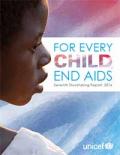
Resource | Publications,
Despite enormous progress, over half of the world’s new infections last year were among women, children and adolescents. Every day, around 400 children become infected – enough to fill nearly six school buses. Far too many pregnant women living with HIV are still not receiving treatment, putting their own lives, and the lives and futures of their unborn children, at risk. Far too many children have dropped out of treatment, or never received it in the first place.
The situation is especially dire for adolescents – and for adolescent girls most of all.
To end AIDS in children once and for all, we need to focus on both treatment and prevention, with a deeper focus on the life cycle of the child, beginning during pregnancy, in infancy and childhood, and through adolescence.
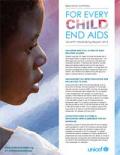
Resource | Publications,
Children living with HIV (aged 0–4) face the highest risk of AIDS-related death compared to all other age groups. The AIDS-response must focus on solutions for this extremely vulnerable population. Preventing new infections, but also testing and starting treatment early are the best ways to end AIDS among the youngest children. In an age when the tools and knowledge are at hand to prevent and treat HIV in children, new infections and deaths among this age group reflect a collective failure to prioritise children.
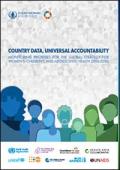
Resource | Publications,
The Global Strategy for Women’s, Children’s and Adolescents’ Health (2016-2030) came into effect alongside the Sustainable Development Goals (SDGs) in January 2016. Its vision is to advance the 2030 Agenda for Sustainable Development by guiding transformative change that enables every woman, child and adolescent – in every setting – to realize their full potential and their human right to the highest-attainable standard of health. It is put into action by the Every Woman Every Child (EWEC) movement, which supports country-led implementation through aligned multi-stakeholder commitments, technical support, financing and a Unified Accountability Framework.
This report assesses the worldwide state of readiness to begin monitoring of progress using the Indicator and Monitoring Framework of the Global Strategy.
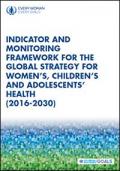
Resource | Publications,
This report presents the indicator and monitoring framework for the Global Strategy for Women’s, Children’s and Adolescents’ Health, (2016-2030) focusing on its Survive, Thrive and Transform objectives and 17 targets. The report details the selection process for the indicators and implications for monitoring, measurement, investments and reporting.
Based on technical reviews and an open consultative process, 60 indicators were selected. They refer to priority areas in the Global Strategy and have a proven measurement track record. The framework aims to minimize the burden of country-to-global reporting by aligning with 34 indicators from the Sustainable Development Goals (SDGs).
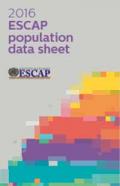
Resource | Data Sheets,
This document presents the population and development indicators for Asia and the Pacific for the year 2016.
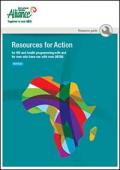
Resource | Tools,
This is an updated version of the resource guide for men who have sex with men (MSM) developed by the the Sexual Health and Rights Programme (SHARP) in Africa, first published in October 2015.
The resource guide aims to provide a quick reference on a wide range of topics relevant to rights-based, effective, sustainable and integrated community-led and public health responses to men who have sex with men (MSM).
The resource guide has been developed through an extensive global literature review and an appraisal of available tools and resources on MSM in Africa and other regions where appropriate.
The review and appraisal were guided by a list of critical topics and elements that the guide should contain. These were taken from available resources and discussed and agreed with SHARP partners. They were selected from other MSM community-led organisations and civil society organisations supporting MSM community action in Africa.
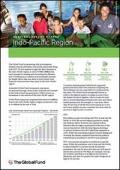
Resource | Publications,
The Global Fund is partnering with governments, medical experts, advocates, civil society and people living with HIV, TB and malaria to fight the three diseases in the Indo-Pacific region. A total of US$9.2 billion has been invested in treating and preventing the diseases, and to building more resilient and sustainable systems for health. More than one-third of total Global Fund financial resources have been spent in the Indo-Pacific region.
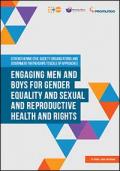
Resource | Tools,
Today, there is a sizeable breadth of research on the role of men and boys, particularly in the arenas of violence, health, sexuality, and masculinities. This body of research and program evidence demonstrates that the meaningful participation of men and boys in support of gender equality, as well as in the field of sexual and reproductive health and rights (SRHR), including safe motherhood and family planning, can lead to positive changes in their attitudes, perceptions, and behavior that benefit women and girls. In recent years, there has also been increasing recognition of the need to build program approaches and strategies to support the active participation of adolescent boys and young men that recognize the context-specific needs and vulnerabilities of boys and young men themselves and supports engaging men and boys as beneficiaries of and stakeholders in gender equality.
This tool is a living document that provides guidance on good partnership practices that promote strong relationships between civil society organizations and government representatives on engaging men and boys in gender equality and sexual and reproductive health and rights (SRHR).
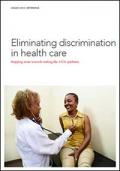
Resource | Publications,
There have been enormous advances in the AIDS response during the past decade. New HIV infections have decreased since 2000, society is one step closer to eliminating HIV infections among children, more people living with HIV know their status and are receiving HIV treatment, and AIDS-related deaths are declining. Global commitment, clear goals, resources, innovation and, not least, communities made this happen.
This report briefly describes and defines the challenges and impacts of discrimination in health-care settings. Such discrimination affects people seeking access to HIV prevention, testing, treatment, care and support measures, as well as health-care workers in their workplace. International human rights standards provide the rationale for catalysing global action to eliminate such discrimination. This report aims to serve as a reference for policy-makers and other key stakeholders engaged in shaping policies and programmes to regulate health care, and eliminate discrimination and other structural barriers to achieving healthy lives for all.
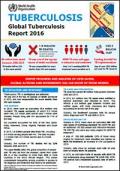
Resource | Fact Sheets,
Tuberculosis (TB) is contagious and airborne. TB was one of the top 10 causes of death worldwide in 2015, and was responsible for more deaths than HIV and malaria.
In 2015, there were an estimated 10.4 million new (incident) TB cases worldwide, of which 5.9 million were men, 3.5 million were women and 1 million were children. People living with HIV accounted for 11% of the total. Six countries accounted for 60% of the new cases: India, Indonesia, China, Nigeria, Pakistan and South Africa.
In 2015, 1.8 million people died from TB, including 0.4 million among people with HIV. The total includes 1.1 million men, 0.5 million women and 0.2 million children. Globally, the number of TB deaths fell by 22% between 2000 and 2015.





